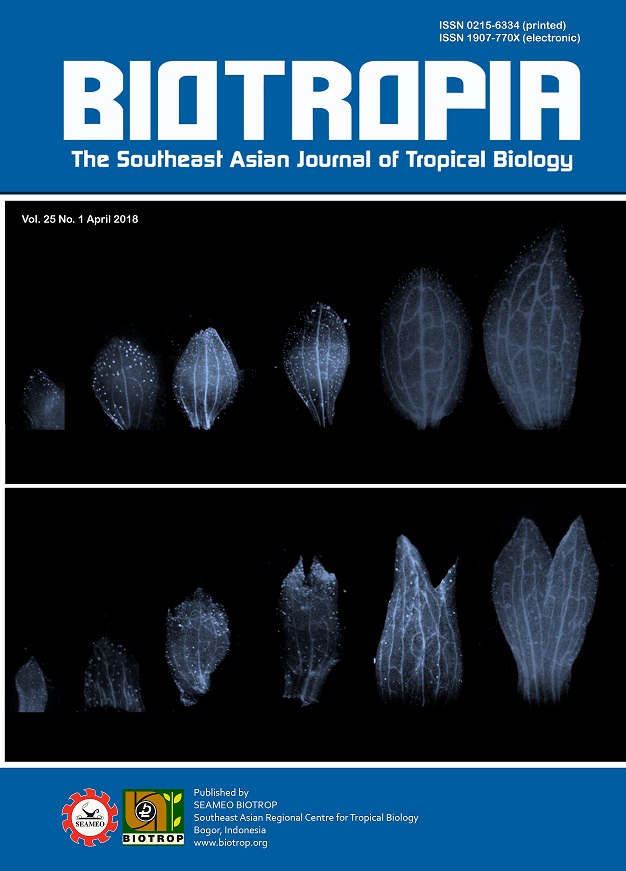
Tags
SOIL CHARACTERISTICS UNDER INTENSIFIED SHIFTING CULTIVATION FOR UPLAND RICE CULTIVATION IN UPLAND SABAL, SARAWAK, MALAYSIA
Content Language : English

Shifting cultivation practices are regarded as the most important agricultural land-use in the marginal uplands of Sarawak for the livelihood of the rural communities. In response to various socio-economic consequences, previous practices on traditional form of shifting cultivation were altered into much sedentary farming practices. Soil productivity to sustain rice yield under current intensified forms of shifting cultivation should be of prime importance for food security among the local community at the marginal uplands of Sarawak. Therefore, this study was conducted to characterize soil properties influenced by the current intensified shifting cultivation practices at Sabal upland area, Sarawak. Along with the use of agrochemicals, shifting cultivation at Sabal area was conducted through single cultivation practices (10 to 15 years of fallow period and a cycle of rice cultivation) and multiple cultivation practices (5 to 7 years of fallow period and two cycles of rice cultivation). Before burning practices, soil pH was highly acidic (ranged from 4.28 to 4.72) in single cultivation sites; while multiple cultivation sites showed less acidic nature (soil pH ranged from 4.98 to 5.23) with relatively high secondary macronutrient contents, especially soil exchangeable Mg and Ca. No significant observation was found after burning practice in Total C and Total N of the soils at both sites. The level of soil exchangeable bases (K, Mg and Ca) and available P increased after the burning practices in single cultivation farmlands; while multiple cultivation sites showed lower to no increase in exchangeable bases and available P, partly attributed to the limited supply of nutrients from the aboveground biomass. After the harvesting of rice, soils at both sites tended to be more acidic and lower in macronutrient contents (K, Mg and Ca), primarily ascribable to crop uptake during the cultivation period. The average yield of rice in single cultivation sites and multiple cultivation sites were 721 kg/ha and 391 kg/ha, respectively. Our findings suggested that the usage of agrochemicals, particularly fertilizers in multiple cultivation sites are necessary for sustaining rice yield to restore the depleted macronutrients (especially K, Mg and Ca) after successive cultivation.
Link

This work is licensed under a Creative Commons Attribution-NonCommercial-NoDerivatives 4.0 International License.
